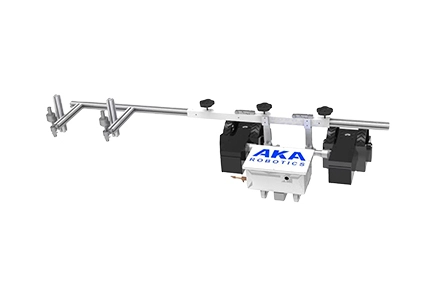In the realm of industrial operations, especially within sectors that heavily rely on oil storage, maintaining the integrity and cleanliness of oil tanks is vital. An oil storage tank's hygienic condition is not only crucial for ensuring the quality of the stored product but is also a matter of economic efficiency and safety. Traditional methods of cleaning these massive structures have often involved a significant amount of manual labor, posing risks to workers and sometimes resulting in less-than-optimal cleaning outcomes. That’s where the advent of the oil tank cleaning robot marks a pivotal shift in how businesses approach this critical maintenance task.

The primary advantage of an oil tank cleaning robot is its ability to perform thorough cleaning tasks without compromising worker safety. Previously, personnel tasked with cleaning oil tanks had to deal with the hazardous environment inside, such as exposure to harmful vapors or the risk of slips and falls. Now, with the deployment of robots designed specifically for this job, these risks are significantly minimized. Robots can enter confined spaces, endure hazardous conditions, and perform cleaning tasks with precision, all while being remotely controlled from a safe distance.
Moreover, oil tank cleaning robots bring a level of efficiency that manual cleaning efforts simply cannot match. Equipped with cutting-edge technology, these robots can scan the entire interior of a tank to identify areas that need the most attention, ensuring that no spot is missed. The efficiency doesn't stop at comprehensive cleaning, either. Robots can accomplish the task much faster than human crews, minimizing the downtime of the tank and, by extension, enhancing the overall productivity of the operation.
Integrating oil tank cleaning robots into maintenance routines also presents significant economic advantages. First, the reduction in human labor directly translates to cost savings. Additionally, by maintaining tanks in pristine condition, companies can avoid costly repairs that arise from negligence, such as corrosion or sludge build-up, which can deteriorate tank walls and contaminate the stored oil.
From an environmental perspective, the precision of robots in cleaning and disposing of waste reduces the likelihood of hazardous materials being accidentally released into the environment. This not only aids in compliance with environmental regulations but also promotes corporate responsibility towards preserving ecological health.
As industries continue to evolve, the infusion of technology into standard practices has become inevitable. The case of oil tank cleaning robots is a testament to how innovation can transform a traditionally labor-intensive and hazardous task into a safe, efficient, and environmentally friendly operation. Businesses that embrace these technologies not only set themselves up for operational success but also contribute towards creating safer work environments and reducing environmental impact.
In conclusion, the oil tank cleaning robot represents a significant leap forward in industrial maintenance. Its ability to deliver high-quality cleaning safely, efficiently, and economically makes it an indispensable tool in the modern oil and gas sector. As technology advances, we can expect to see even more innovative solutions being developed, further revolutionizing the way we approach industrial maintenance and operational efficiency.